The evolution of music in video games throughout history is truly captivating as it is closely linked to the evolution of technology and the novelty of the media.
It's origins can be traced back to the early days of arcade gaming in the 70s. At that time, video games for the most part only had sound effects. However, it didn't take long for the first musical experiments to take place and for video game developers to realize the many benefits music could bring to their creations.
After the first few examples, music in games became the norm. With technology advances came added possibilities for more nuanced and detailed compositions. This would lead to the immersive soundtracks and gameplay experiences we can enjoy today.
The evolution of video game music was a combination of an industry push for innovation but also the amazing work of video game music composers that helped cement it as a true art form.
What was the first video game soundtrack?
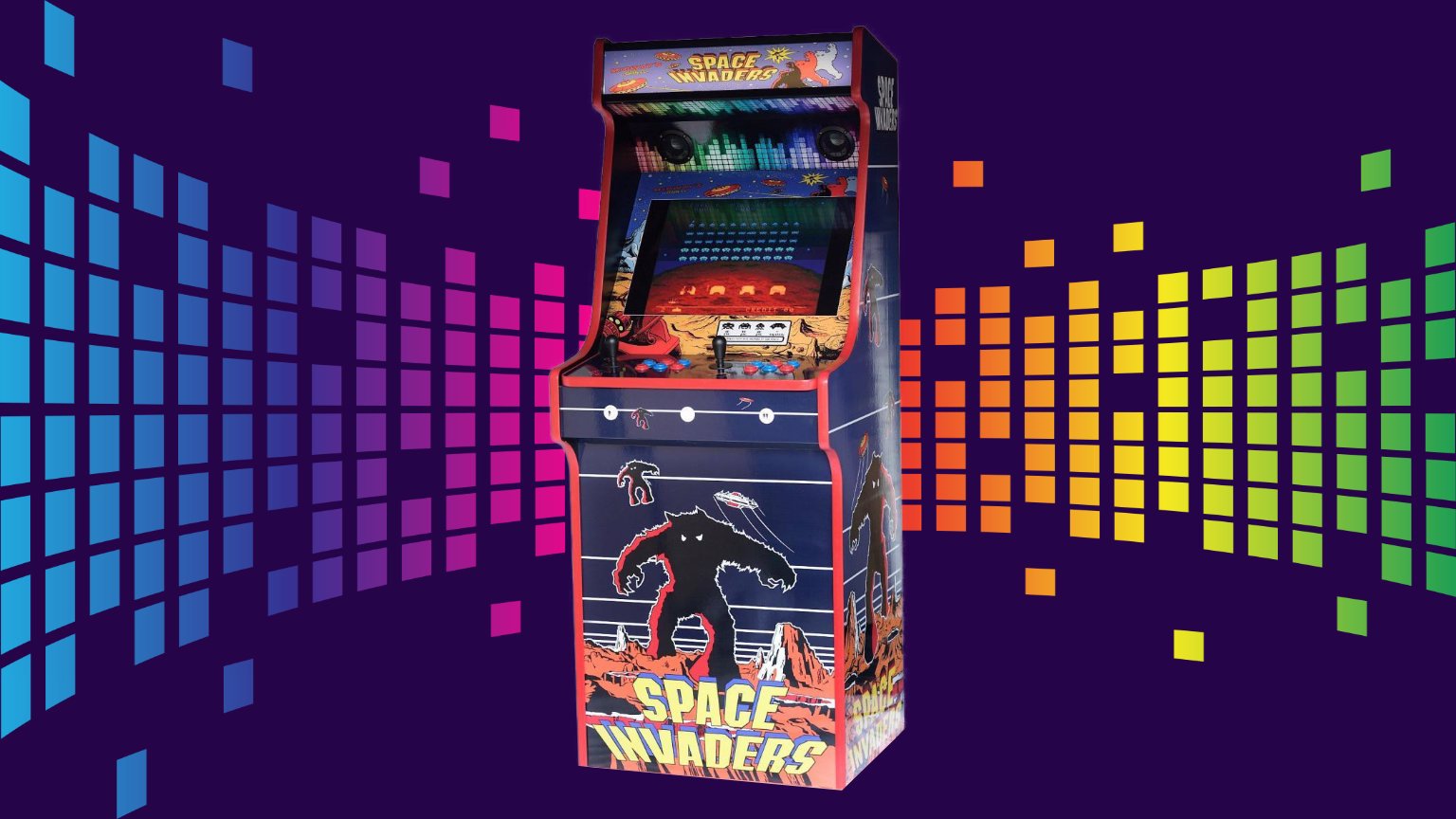
One of the earliest examples of video game music was in "Space Invaders", released in 1978 for arcades worldwide. Using the basic sound chips that were available at the time it featured what is now regarded as the first video game soundtrack: A simple, repetitive and continuous melody.
Today this soundtrack can be considered by many as noise but it was nonetheless groundbreaking back then. It consisted of four descending chromatic bass notes repeating in a loop. It was also programmed to increase tempo as enemies descended on to the player. The added musical pace made players tense which made for a more immersive experience.
Even though this is considered to be one of the first game music examples, the first title that resembled “real” music was Rally-X, another arcade game released in 1980. It featured the first use of a continuous melodic soundtrack.
Interactivity
One thing that sets game music apart from other kinds of media is its interactivity. This means that the music can change (alter itself) based on the player's actions and gameplay events.
Today this music interactivity, that was also previously called interactive music is often referred to as adaptive music. The concept of adaptive music in games started as soon as video game music itself.
Although the first example of adaptive game music is considered to be Frogger by Konami (1981), Space invaders mentioned before could also be considered to have featured adaptive game music. The music changes or "adapts" throughout gameplay by becoming faster and faster until all the enemies are defeated.
The concept of adaptive music in games started as soon as video game music itself.
The 8-bit era (Third generation)
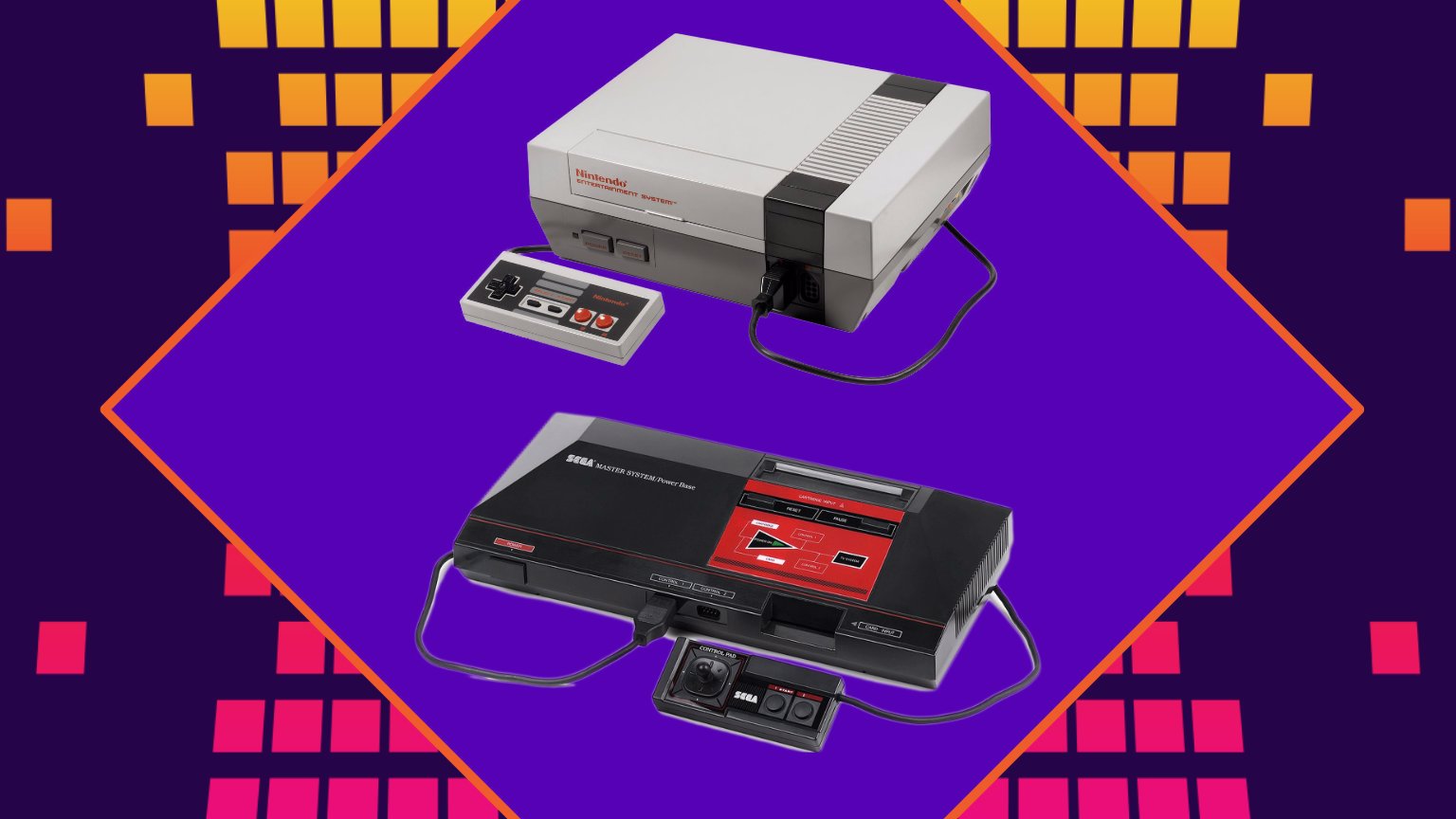
Nintendo Entertainment System (NES) and the Sega Master System
The 8-bit era (third generation of video game consoles) started with the release of consoles such as the Nintendo Entertainment System (NES) and the Sega Master System.
One of the defining features of the 8-bit era was the introduction of improved sound chips that allowed for more nuanced and detailed music. Gone were the days of basic beeps on a single-channel sound chip. Instead, developers had access to more sophisticated programmable sound generators (PSGs) that allowed for the creation of more interesting and original soundtracks.
One of the defining features of the 8-bit era was the introduction of improved sound chips that allowed for more nuanced and detailed music.
Chiptune
The advances of the 8-bit era of gaming not only transformed the video game industry but also set the foundation for a new style of music that became known as "chiptune." A fitting name given its connection to the sound and technology of the era.
Today there are still new projects that strive for this kind of sound especially those being developed by indie developers.
The 16-bit era (Fourth generation)
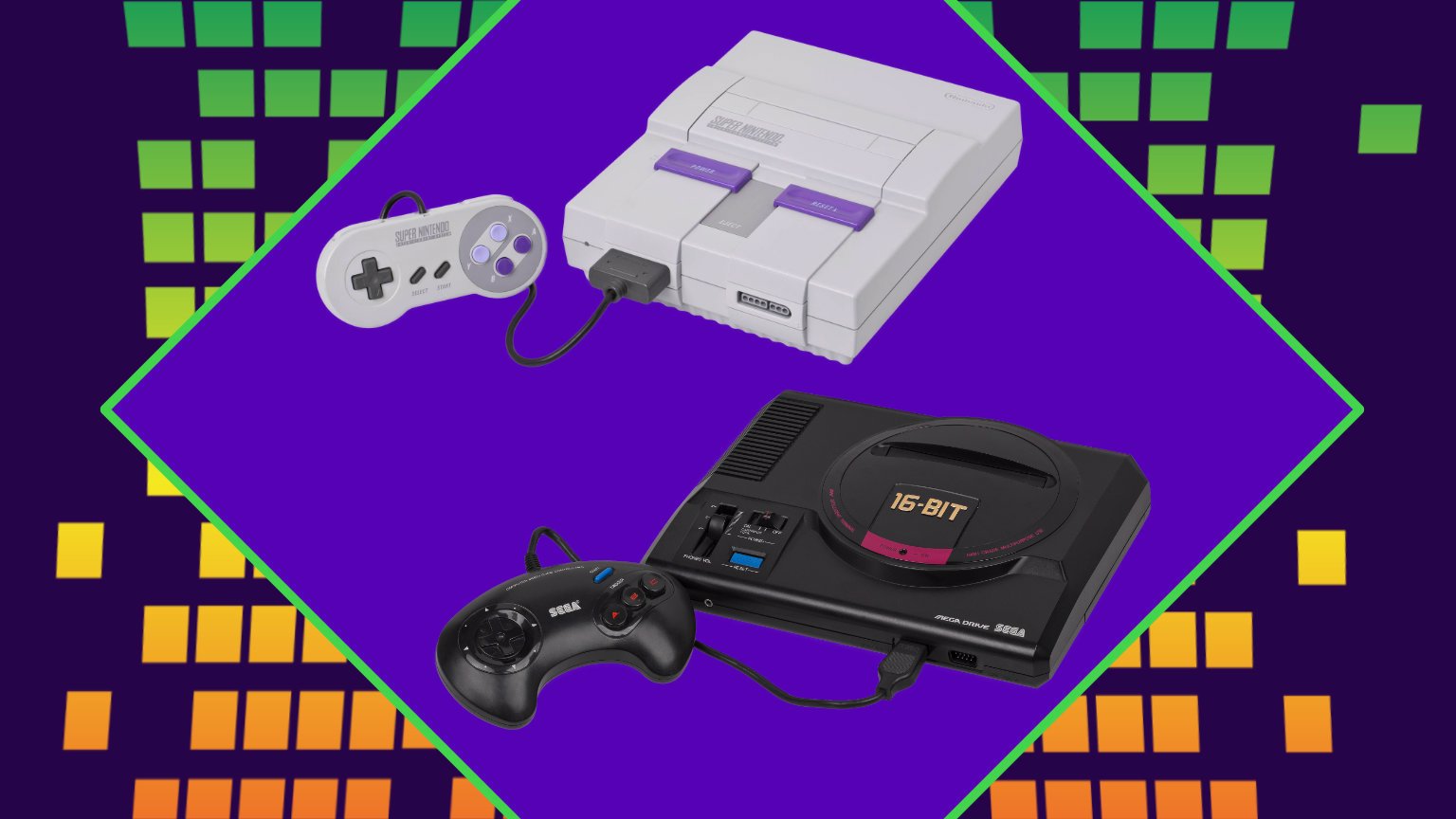
Super Nintendo Entertainment System (SNES) and the Sega Mega Drive
The 16-bit era (fourth generation of video game consoles) had in its roster a new set of video game consoles that included the Super Nintendo Entertainment System (SNES) and the Sega Mega Drive (Sega Genesis in North America).
This era bought additional improvements to the sound chips that had started to allow for the usage of increased numbers of audio channels, the use of recorded samples and realistic sound effects.
One of the most significant developments in game music during this era was the use of real musical instruments. Donkey Kong Country, released in 1994 for the SNES, used recorded samples of real instruments to create a more dynamic and lifelike soundtrack.
New music creation methods also emerged during this era, giving composers the freedom to create more intricate and immersive music while developers could focus on other tasks.
One of the most significant developments in game music during this era was the use of real musical instruments.
The 32-bit era (Fifth generation)
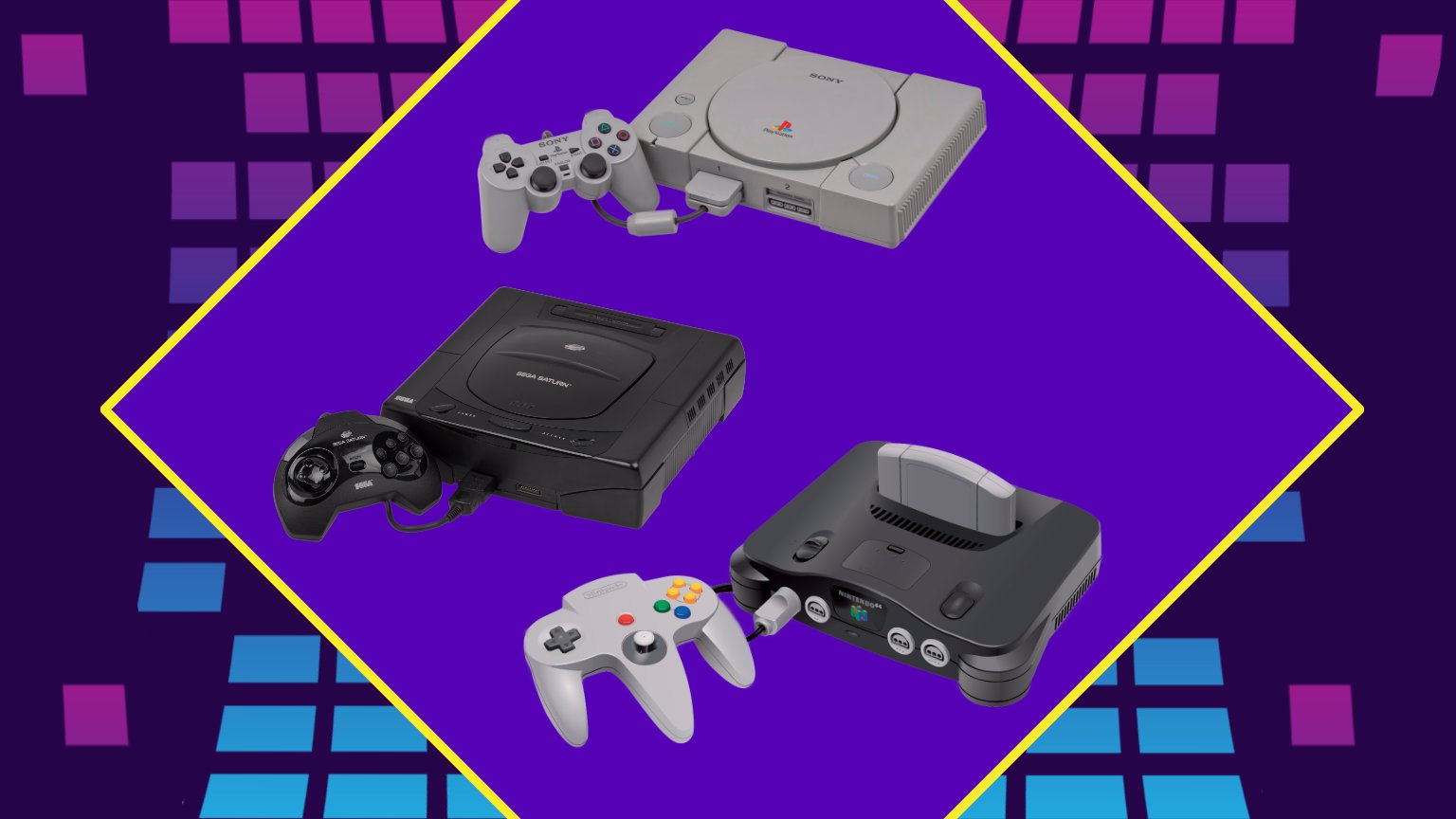
Sony PlayStation, Sega Saturn and the Nintendo 64
The 32-bit era (Fifth generation of video game consoles) represented a time of significant change and innovation in the video game industry. This generation started the shift from 2D to 3D graphics and included consoles such as the Sony PlayStation, Sega Saturn, and Nintendo 64.
One of the defining features of this era was the use of CDs for data storage. This allowed for larger and more complex games, as well as the inclusion of full-motion video and higher-quality sound.
This was a significant development in video game music, as it enabled the integration of CD quality-sound. This meant that video games were now able to take advantage of PCM digital audio which allowed for musical recordings similar to the ones we can hear today in every other kind of media.
This gave composers the freedom to use instrumentation from many different musical genres that were difficult or even impossible to realistically emulate before. Convincing orchestral music is such an example.
One of the defining features of this era was the use of CDs for data storage.
Computer game music

The IBM PCjr computer
Back then consoles were the most popular way of playing games. They had a wider reach and appeal to the general public and it was often more difficult for developers to create music and sound that would work well across systems. Nonetheless, computer hardware was evolving at a fast pace.
For a while computers only emitted simple feedback beeps to the user before video output had been initialized using a small speaker. In the 80's there were also the PCjr and Tandy 1000 computers but they were limited to three or four voice sounds. It wasn't until the late 80's that the first PC sound cards would be released. One of them was the AdLib music synthesizer.
The AdLib sound card was a significantly improvement to video game audio. It quickly gained popularity among PC gamers as it offered high-quality game sound at a reasonable price. The AdLib would eventually be replaced by the Sound Blaster series of sound cards.

The Sound Blaster sound card
The first Sound Blaster sound card was released in 1989. Its features included perfect compatibility with the AdLib sound card and ADPCM audio decompression. Additionally, it could both record and playback 8-bit samples for even more creative possibilities. In terms of sound capabilities both of these cards could have been roughly compared to the consoles from the fourth generation, such as the SNES and the Sega Mega Drive.
In 1992 the Gravis UltraSound sound card would be released which was one of the first soundcards to allow for CD-quality music to be played back on computer systems.

The Gravis UltraSound sound card
As computers continued to become more popular, powerful and sophisticated, it also became possible for composers to use computer software for the creation, recording and editing of music.
The role of composers
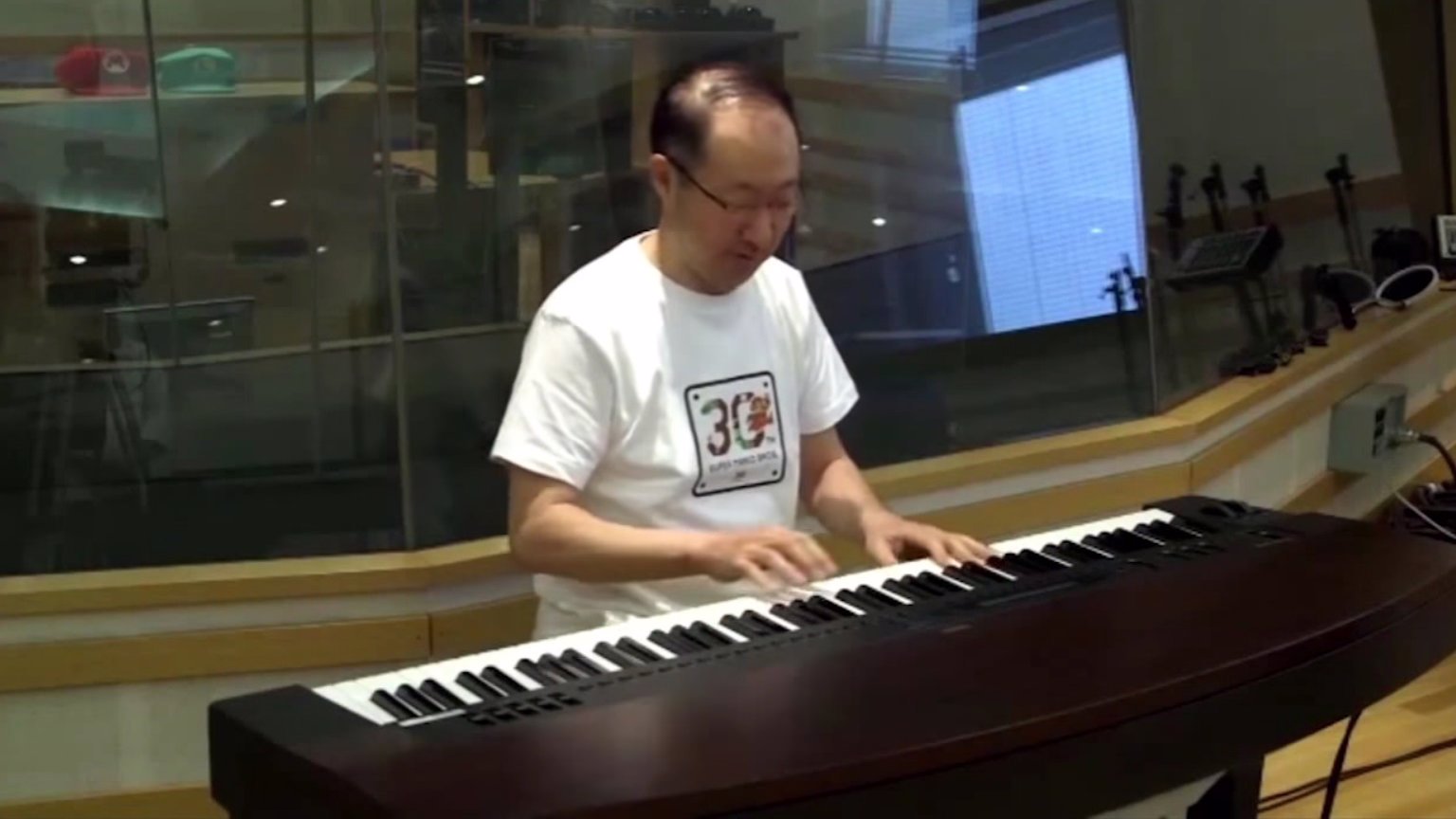
Koji Kondo: A Japanese composer famous for its soundtracks made for Nintendo games.
While technology played a major role in the development of video games and its music, it was the composers and music programmers who often went unrecognized as the true heroes.
For a long while composers had to deal with lots of constraints that the technology available at the time would impose them. Composers learned to maximize the potential of the limited sound channels, creating memorable melodies and using creative techniques like arpeggios, pulse width modulation and pitch bending to enhance the music.
Still, all of those limitations did not deter them to create some of the most iconic music available in any media format. Some compositions are still present in the heads of many players today and some of them are now played live by renowned orchestras.
While technology played a major role in the development of video games and its music, it was the composers and music programmers who often went unrecognized as the true heroes.
All of the previously mentioned console generations had amazing soundtracks. Although there are many more and opinions may differ, I'll make a brief mention of some of the most iconic of each generation:
8 - Bit
Super Mario Bros. (1985 - NES) - The soundtrack for Super Mario Bros. is instantly recognizable. Composed by Koji Kondo, it features catchy, upbeat tracks that perfectly match this title's cheerful and colorful aesthetic.
Alex Kidd in Miracle World (1986 - Master System) - Similarly to Super Mario Bros. this platformer game featured catchy and upbeat music composed by Tokuhiko Uwabo that perfectly complemented its action and puzzle-solving challenges.
The Legend of Zelda (1987 - NES) - Composed by Koji Kondo, the soundtrack for The Legend of Zelda features a mix of adventurous and atmospheric tracks that adds a sense of wonder and excitement to the gameplay.
16 - bit
Super Mario World (1990 - SNES): Composed by Koji Kondo, the Super Mario World soundtrack is known for its upbeat and adventurous themes that perfectly capture the spirit of the Mario universe.
Sonic the Hedgehog (1991 - Mega Drive): Composed by Masato Nakamura, the Sonic soundtrack features catchy bass driven tunes that perfectly match the high-speed action.
Street Fighter II (1992 - SNES): Composed by Yoko Shimomura, the Street Fighter II soundtrack is a classic example of arcade-style video game music, with energetic and memorable themes for each character.
32 - bit
Super Mario 64 (1996 - Nintendo 64) - Composed by Koji Kondo, this soundtrack features catchy and upbeat tunes that accompany Mario's platforming escapades to soothing melodies that set the mood in underwater environments.
Final Fantasy VII (1997 - PlayStation) - Composed by Nobuo Uematsu, this soundtrack mixes orchestral and electronic music and is often considered one of the best of all time.
Castlevania: Symphony of the Night (1997 - PlayStation, 1998 - Saturn) - Composed by Michiru Yamane, The music perfectly complements the gothic aesthetic and vampire-themed storyline, immersing players in a chilling and eerie atmosphere.
Today's game music
As explored, the technology behind games and music evolved at a rapid pace and consoles and computers evolved in tandem. Through time computers started to play an increasing role in the creation and production of music for this or any other kind of media.
They started to become faster and more capable. Digital audio workstations (DAWs) added new features, higher channel counts, and music equipment and software became more accessible.
Other features that made computers the power-houses for music creation and production that they are today was the proliferation of audio software that could emulate classic and modern synthesizers, powerful sound effects and samplers.

The Pro Tools digital audio workstation along with the Reason instrument and effects container plugin.
The availability of sample libraries also allowed composers to write music with the sound of almost every instrument imaginable and emulate realistic performances.
Today video game composers no longer have to deal with any of the limitations of the past. They can freely write according to the project needs and use or record real instrumentation. They can also invoke the sounds of the past generation of consoles, from chiptune to everything in between.
Video Game Music Concerts
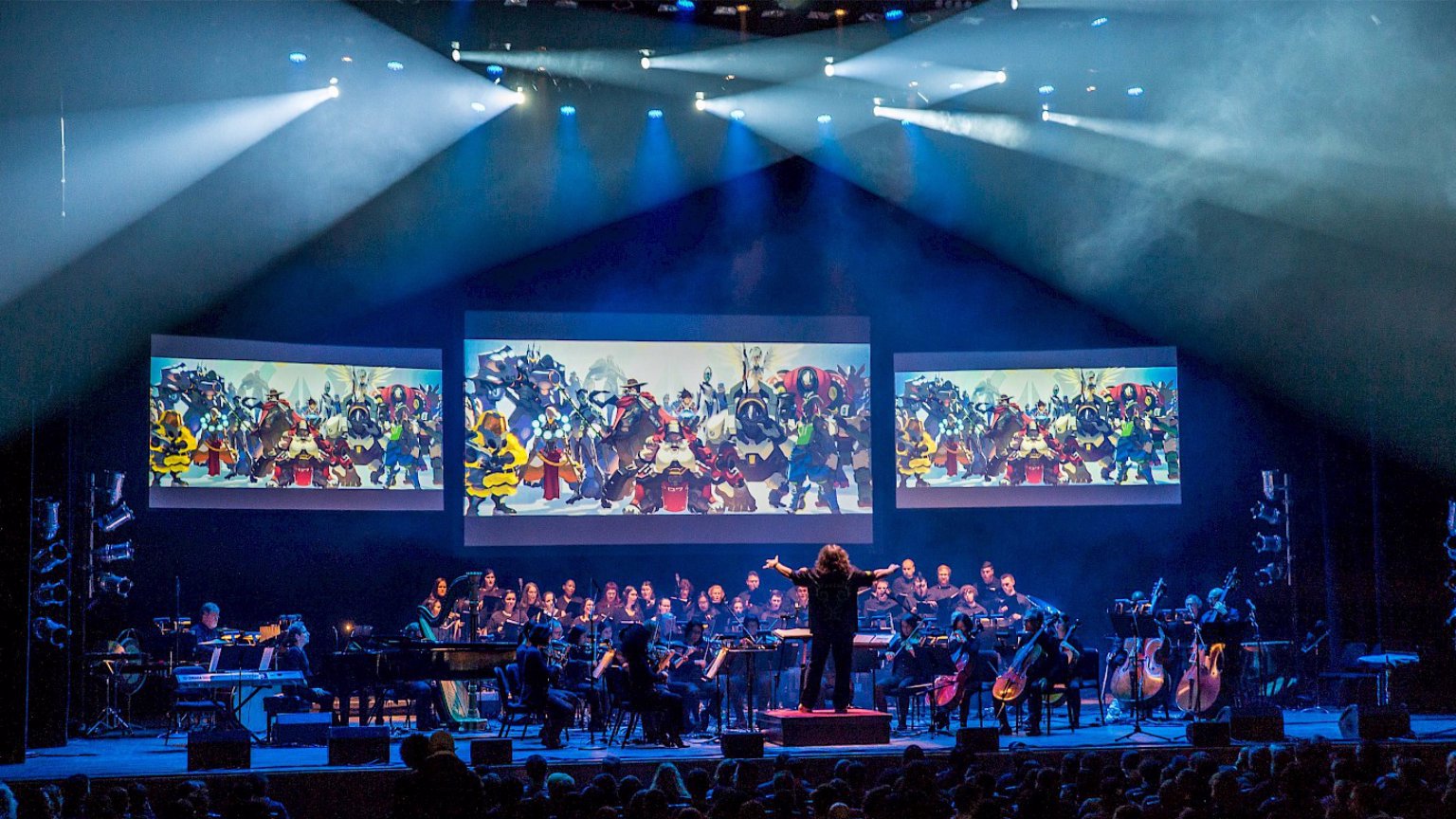
Video Games Live tour photo
Video game music concerts have gained significant popularity in recent years. Many are being held around the world with audiences that includes both gamers and music fans.
One of the most well-known video game music concert series is the "Video Games Live" tour, which started in 2005 and has performed over 500 international shows. The concerts feature music from a wide range of games, including classics from the arcades, consoles and PCs.
Other popular video game music concert is the "Distant Worlds" tour. This is a worldwide concert tour that started in 2007 focusing on the music from the Final Fantasy series.
More recently in 2019, DJ Marshmello performed at a different kind of concert: one held live in-game in Fortnite. It had an audience of 10 million players.
These and many other concerts being held around the world really demonstrate the impact video game music has nowadays.
Conclusion
The history of video game music is a compelling journey that spans several decades. From the early days of simple bleeps and bloops to the complex and immersive orchestral scores of today.
As technology advanced, game music evolved wich allowed for richer and more nuanced soundtracks. Soundtracks like the ones in Super Mario Bros., The Legend of Zelda, Sonic the Hedgehog and Final Fantasy have become iconic and continue to be celebrated by gamers and music lovers alike.
Since its introduction that video game music became a significant component of the gaming experience, enhancing the atmosphere and emotional impact.
The future of video game music also appears exciting, with new technology and tools continuing to open up possibilities for even more immersive and dynamic soundtracks. With the increasing popularity of video games and the growing numbers of players, it's clear that music will continue to play an essential role in the world of gaming for years to come.





